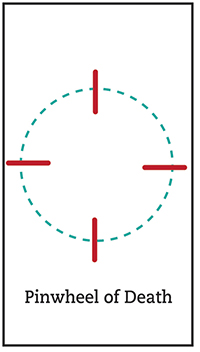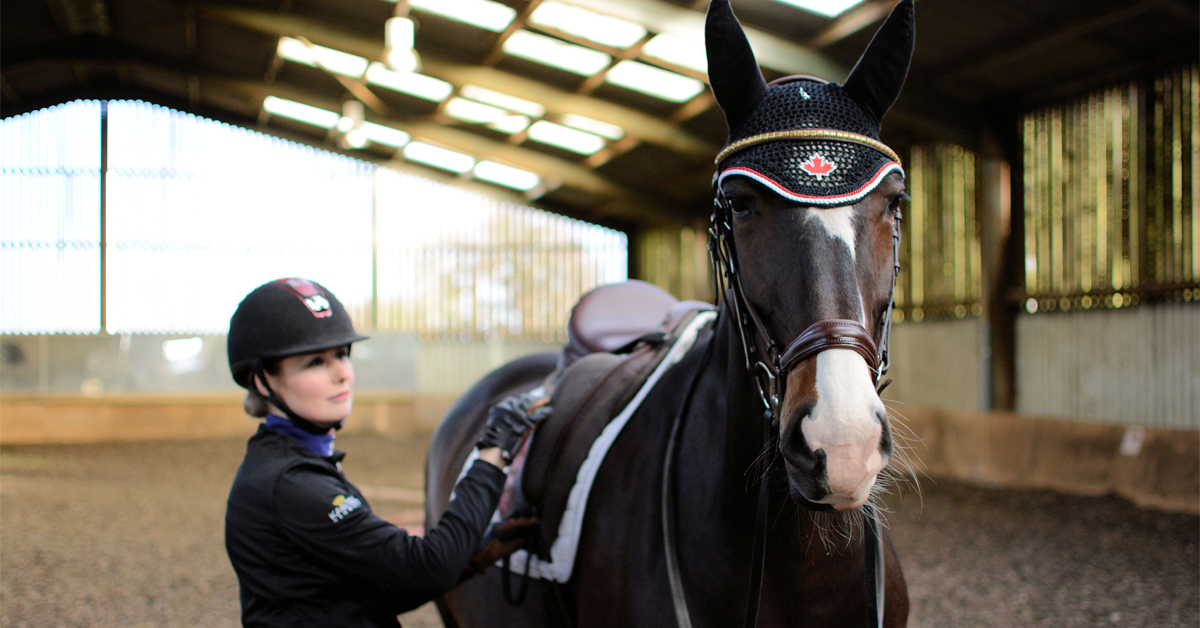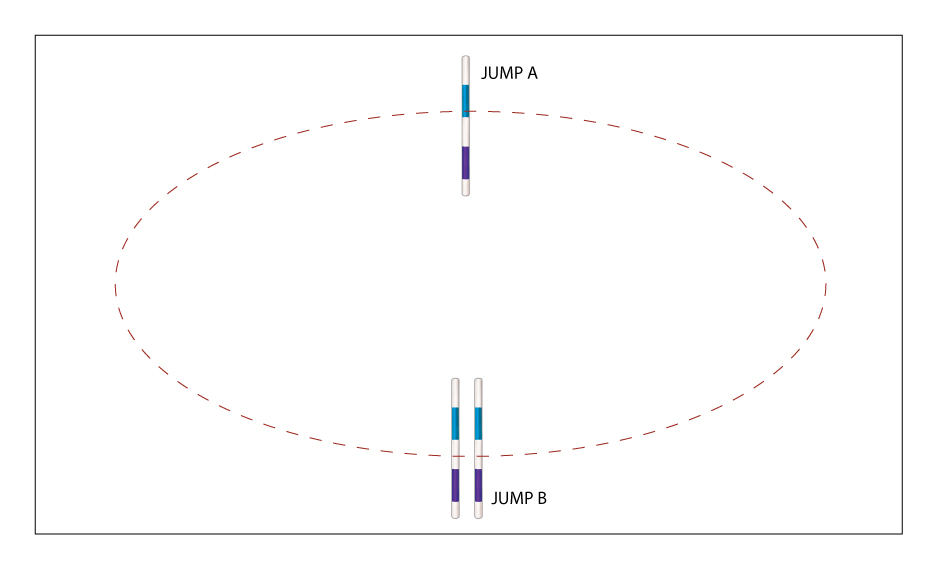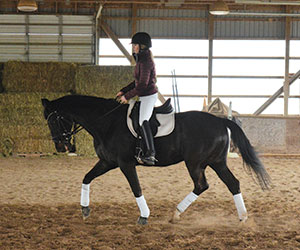Pinwheel of Death for Balance and Bending

You will soon figure out what is the optimum number of strides for your horse that will enable you to smoothly jump each in the same rhythm and not run past the next one – if this happens, you are going too fast and/or not keeping the bend over the pole/cavaletti.
(See other simple 4-pole exercises here.)
The Oval for Problem-Solving
Set up two poles or jumps around the middle of the long sides of the ring or arena and opposite of each other. The aim is to keep a consistent canter rhythm and to get the same number of canter steps at each end from jump to jump. For example, if you ride 14 canter steps from Jump A to Jump B, then you will want to ride 14 canter steps from Jump B to Jump A. The number of canter steps is not important; it is that the number is the same on both sides.
If the rider is getting 15 canter steps at one end and 13 steps on the other, then they will need to either adjust the pace (lengthening or shortening) or tracking (holding out the landing line a little longer before turning).
If the horse falls in through the corners after a jump, the rider will have a clear idea of where to prepare early to correct this. If the horse increases its canter step out of a corner, this exercise will help riders refine the skill of when to balance. Through repetition of the exercise the horse will develop a clearer understanding of the rider’s aids, such as inside leg to outside rein or half-halts.
Variations:
- Stagger the jumps so they are not opposite each other.
- Use different heights – one jump higher than the other.
- Use different types of jumps (vertical, oxer, skinny, etc) and different types of filler.
- Add in mental preparation exercises such as breathing or key words.
Really small arena? You can still perform a number of interesting jumping exercises that incorporate a lot of one-stride distances and bounces.
Posting Exercise to Feel The Rhythm
Changing your posting rhythm is a great way to improve balance and feel for the horse’s rhythm. Begin by sitting a few strides at a time – instead of “up, down, up, down” try “up, down, down, down, up, down, down, down.” This is an excellent exercise for learning or improving the sitting trot. As you get more balanced, increase the number of sitting strides.
A harder variation is to post two or three strides at a time. Try “up, up, down” and see if you can stay up out of the saddle for two beats without losing balance or falling back into the saddle. Increase the number of strides out of the saddle as you get stronger. You should feel the muscles in your abdomen really working to keep you balanced over the horse.
When you’re ready to kick it up another notch, try this exercise without stirrups, and/or without reins.
Don’t Forget Groundwork
Add a little fun to your horse’s routine while playing with a purpose. The horse can be on a lunge line or long lead rope. You can also increase the challenge and try the games at liberty, using targeting or positive reinforcement training.
• Barrels – Ask your horse to walk between two barrels, pushing them closer together as his confidence grows. This can help with situations such as loading on a trailer.
• Tarps – Ask the horse to place the nose on, neck over, and then feet on the tarp. Increase the difficulty by having him walk across, then trot and canter over the tarp in both directions.

• Dollar store stuff – Crushed plastic water bottles, pool noodles, balloons, and flags can all be used to encourage the horse to be more inquisitive, confident, and relaxed. Have the horse touch them, stand on them, walk over them, and allow you to rub the objects on his body.
• Long-Lining Lessons – Using long-lining can reinforce or fine-tune things like steering aids and half-halts. You can use it to spook-proof a horse by long-lining over tarps or past ‘scary’ objects. Great for a horse that is a bit arena sour or is recovering from injury.
And Now for Something Completely Different
Or you can do what Canadian Olympic para-dressage rider Roberta Sheffield has been trying lately with her adorable mare WonkyHorse – Working Equitation!:



